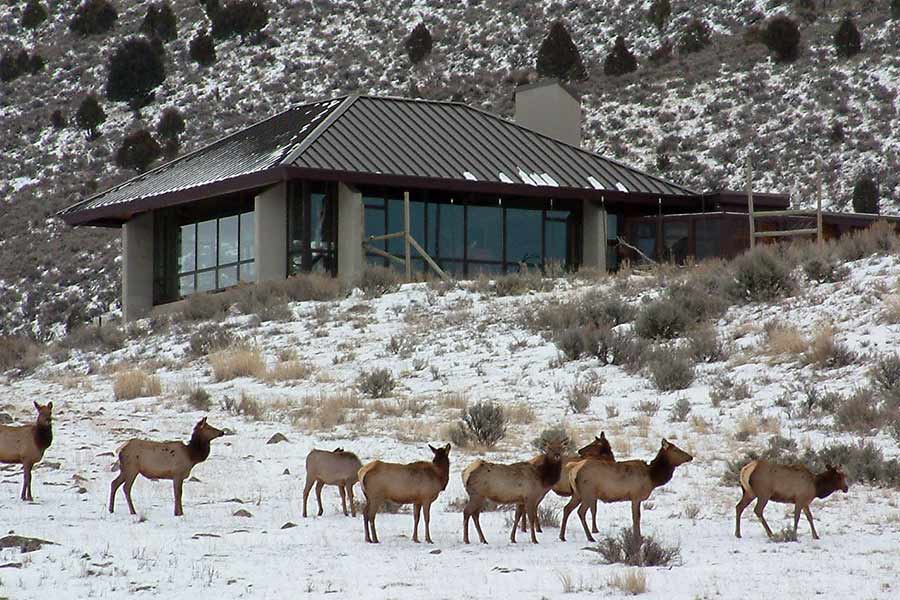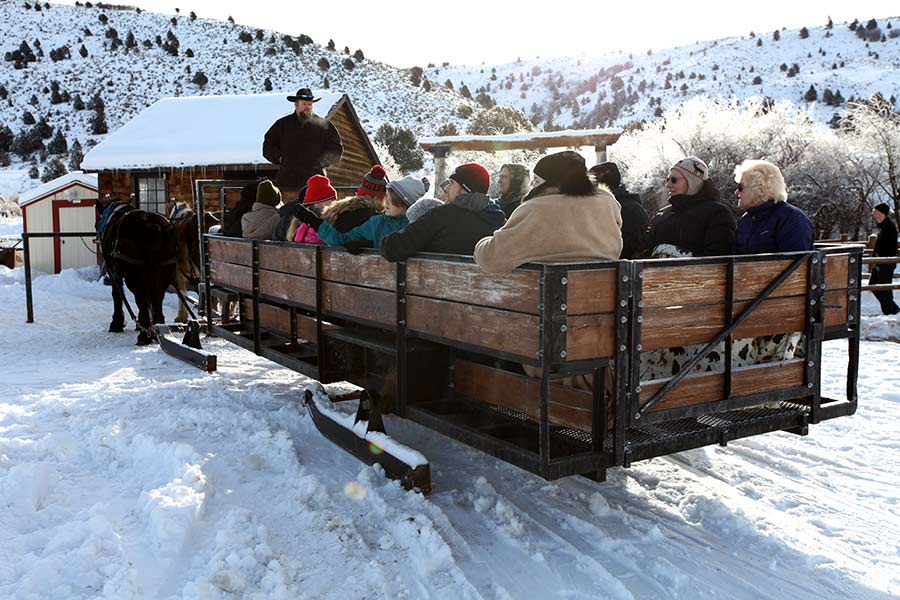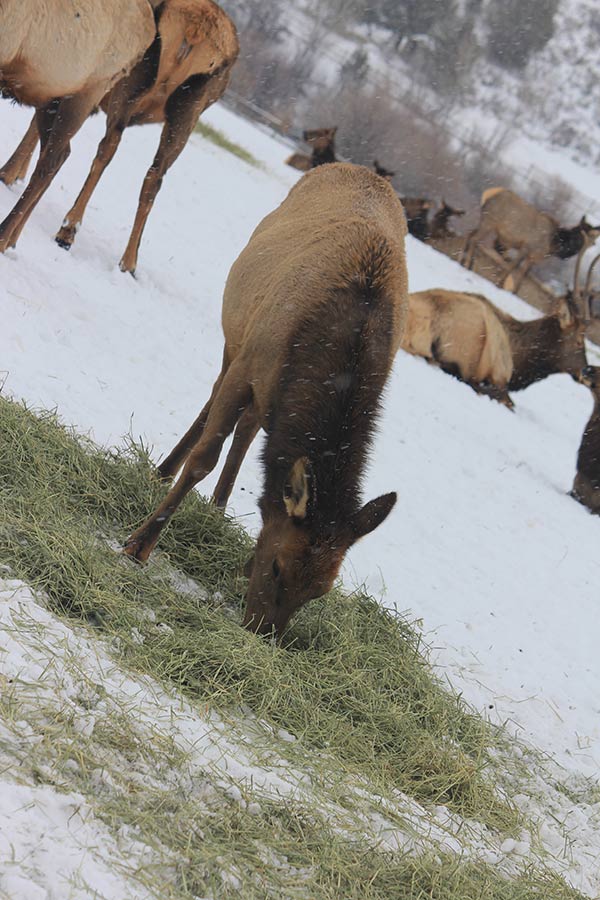Visitors using alternate routes to the Hardware Wildlife Education Center should note that the road atop Hyrum Dam, West 300 South, is currently closed, due to construction.
≡
Hardware WMA
Hardware Wildlife Management Area — located at the top of Blacksmith Fork Canyon in northern Utah — provides habitat supporting a variety of wildlife species, as well as public access for wildlife viewing, hunting, fishing and other outdoor recreation.
Winter season and elk viewing
The center will open on weekends (Friday-Sunday) for the winter season beginning Friday, Dec. 5, 2025 through Feb. 15, 2026, from 10 a.m. to 4:30 p.m. New this year are special holiday open days, also from 10 a.m. to 4:30 p.m.:
- Monday, Dec. 22
- Tuesday, Dec. 23
- Monday, Dec. 29
- Tuesday, Dec. 30
- Wednesday, Dec. 31
Inside the center, scenic, 180-degree vistas provide visitors with a bird's-eye view of the big meadow below and excellent wildlife photography opportunities. Visitors can view elk and other wildlife from the WMA parking lots at any time, year-round, including days when the center is closed.
Horse-drawn sleigh and wagon rides on the WMA are offered in the winter on the days the center is open, and are a unique opportunity to see elk up close and in their natural habitat.
View a slideshow of sights at Hardware WMA.
Recreational and educational activities
In addition to the wildlife around the Education Center, fishing opportunities abound. Licensed anglers can catch several trout species in the nearly 15 miles of streams and rivers on the WMA (anglers 12 years of age and older must have a valid Utah fishing or combination license).
At the Education Center, there are opportunities to learn about elk and other wildlife species through an assortment of exhibits, displays and activities. A new "All About Elk" exhibit will be available to see in the center's habitat room. Fun activities for families will be held in the center on Fridays, Saturdays and Sundays. Each activity runs about 30 minutes.
If you are a teacher or school group interested in learning more about year-round educational opportunities at Hardware WMA, find more details here.
Keeping elk herds healthy
During the winter months, the Utah Division of Wildlife Resources feeds between 500 and 600 Rocky Mountain elk in the big meadow near Hardware's Wildlife Education Center each day. The grass hay used to feed the elk — approximately 300 tons — is grown on the WMA throughout the summer.
Also during the winter, DWR employees use the WMA's trapping facilities to capture some of the elk before weighing them and attaching ear tags. The DWR uses the ear tags to identify individual elk and study population characteristics. We also test a representative sample of elk each year for brucellosis and, occasionally, tuberculosis.











